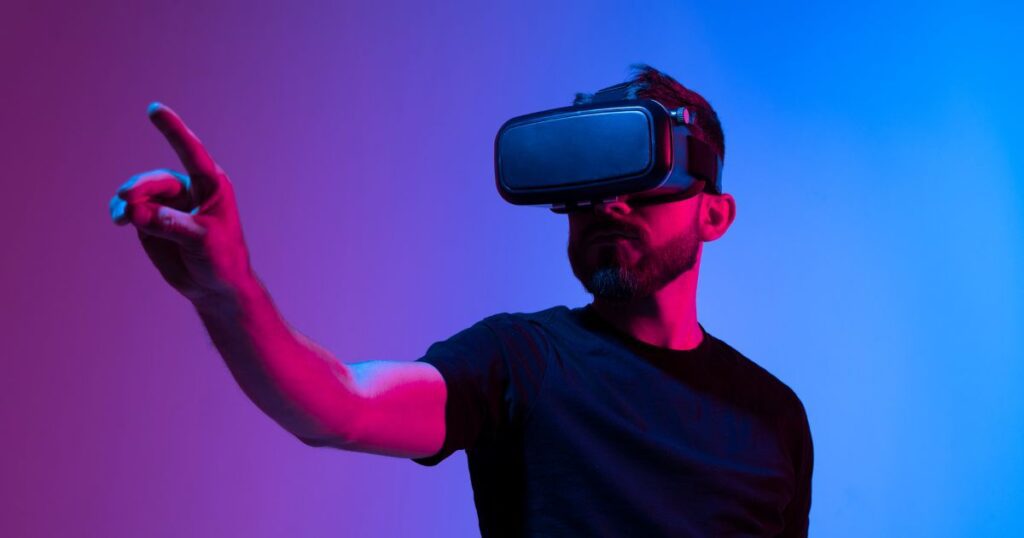The worlds of gaming and sports are colliding as virtual sports take hold. Technology has made simulated sports competitions more immersive and realistic than ever. The rise of virtual sports opens new possibilities for both gamers and athletes. Let’s explore some of the top virtual sports trends from esports to augmented reality that make gaming an athletic experience.
Competitive Esports
Esports has exploded from niche to mainstream with professional video game competitions. Top esports games like League of Legends, Dota 2, and Counter-Strike: Global Offensive pack stadiums and generate huge revenue. Elite gamers train endurance, reaction time, coordination, and strategy just like pro athletes. International events like the Olympics have been considered including esports demonstration competitions. While physical demands differ from traditional sports, esports mirror the competitive spirit, preparation, and mental acuity of elite athletics.
Augmented and Virtual Reality
Immersive technologies like augmented reality (AR) and virtual reality (VR) have revolutionized simulated sports. AR overlays digital elements onto real environments during play for enhanced experiences. VR transports users into believable virtual worlds through headsets. Players feel immersed in everything from virtual tennis matches, car races, and ice hockey games to augmented climbing walls and soccer fields. Sensors and haptic feedback increase realism. As these technologies evolve, simulated sports play will become even more lifelike and engaging.

Fitness Games and Trainers
The fitness genre has embraced gaming technology to make workouts more fun and engaging. Exergames on consoles like Nintendo Switch combine movement and activities from boxing to dance to more traditional sports. Apps like Zombies, and Run! gamify running by creating imaginative worlds. Peloton, Tonal, and other smart fitness machines feature competitive leaderboards and games for motivation. Even virtual personal trainers like FitXR provide customized Boxing, HIIT, and yoga programs in VR. Blending gaming with fitness targets both the mind and body while enhancing athletic training.
Sports Management and Franchise Games
For both casual and diehard fans, sports franchise games allow you to manage full teams and leagues. Bestselling franchises like FIFA, Madden NFL, MLB The Show, NBA 2K, and more offer increasingly realistic team management simulations. As general managers, players handle personnel, playbooks, salary caps, trades, rosters, coaching, and more. Some even allow the creation of expansion teams and rebranded leagues. These immersive simulations let any fan become an armchair professional sports executive by applying strategy and analytics.

Online Fantasy Sports and Betting
Fantasy sports now engage millions of people in virtual management and betting. Platforms like DraftKings and FanDuel allow fans to assemble rosters of real athletes and pit them against other fantasy teams based on stats. The meteoric growth of fantasy leagues and contests has transformed fandom. Legalized sports betting apps have also created new avenues for virtual wagering tied to live events. Both fantasy play and betting applications are extending sports gaming engagement in new directions.
Conclusion:
As technology improves these immersive simulations, virtual sports will become even more ingrained in athletic culture and push new innovations. The possibilities to gamify training, blur esports, and traditional sports, and deepen fan engagement through virtual worlds seem limitless. Bridging gaming with athletics through virtual sports promises exciting synergies ahead.

Frequently Asked Questions about Virtual Sports
How big is the esports industry projected to become?
Esports revenue reached over $1,384 million in 2022 and is forecast to surpass $1.8 billion by 2027, signaling massive future growth and investment.
How do virtual reality games capture realistic sports physics?
Advanced physics engines and algorithms model factors like gravity, collisions, momentum and body movements to replicate real sports biomechanics in VR. Motion sensors also add nuance.
What cognitive and social benefits can fantasy sports provide?
Studies show fantasy sports improve analytical thinking, math skills, motivation, and connection through competition against friends. Superfans enjoy an enhanced experience.
Which tech companies are leading innovation in virtual sports?
Top companies advancing virtual sports tech include Unity, EA Sports, Microsoft, Sony, Strivr, FitXR, Virtuix, StatusPro, and VirZOOM.
What safety precautions should you take with VR sports games?
Use well-padded floor space for movement. Take breaks to prevent nausea and eye strain. Calibrate sensors properly, and gradually build up immersion time to get your VR legs.
How can gyms utilize virtual sports for training?
VR reaction training, simulated personal training, leaderboard fitness games, AR entertainment during cardio and virtual classes/events can enhance gym experiences.




